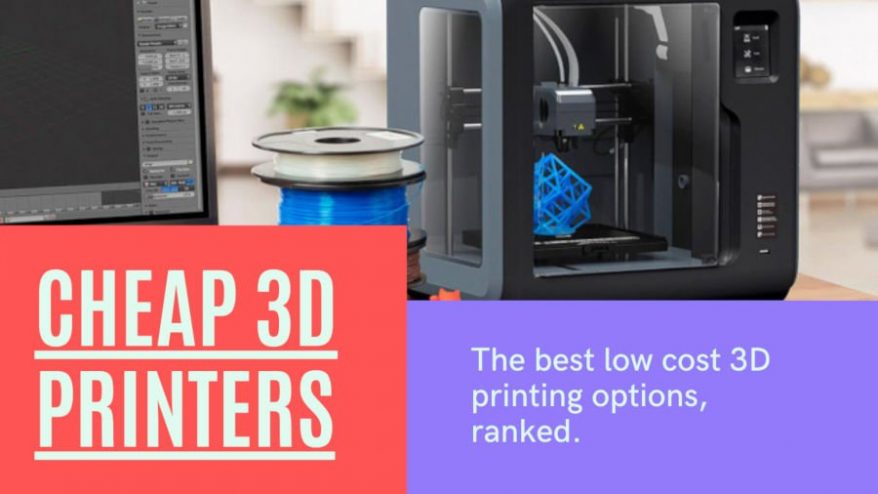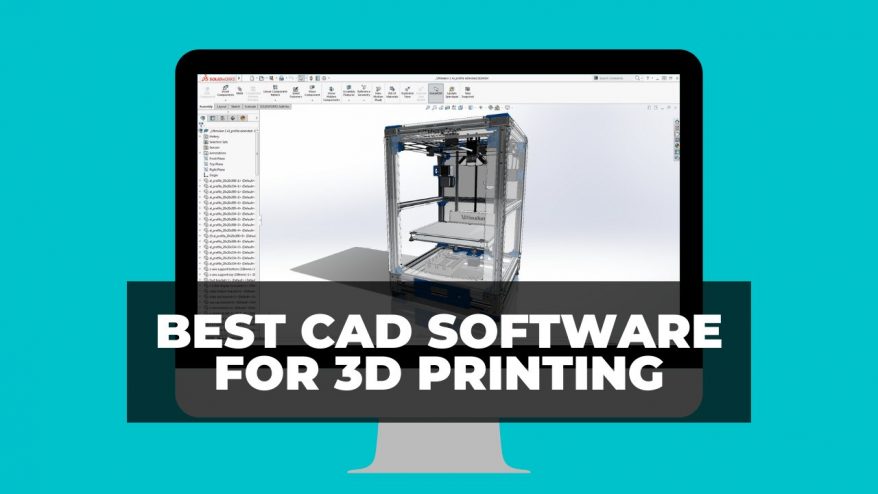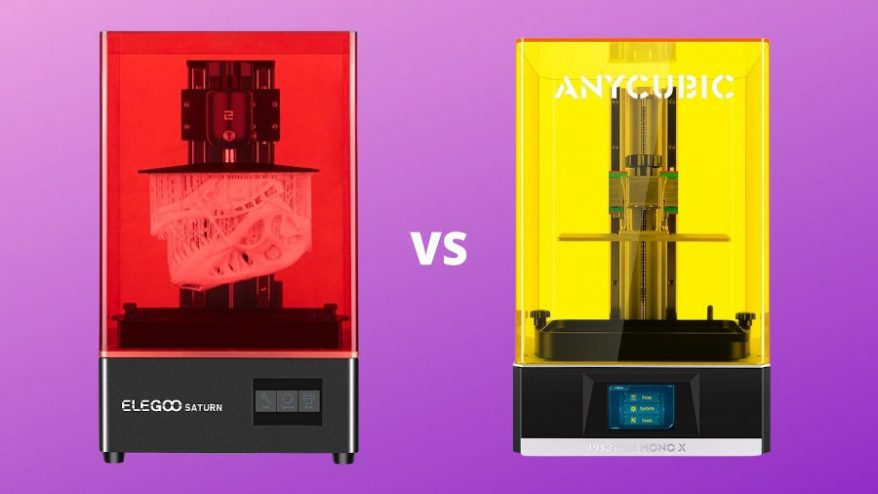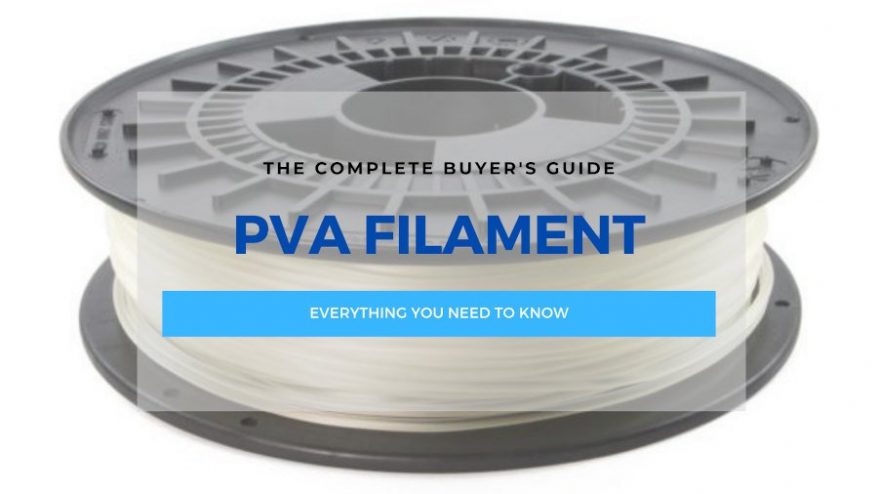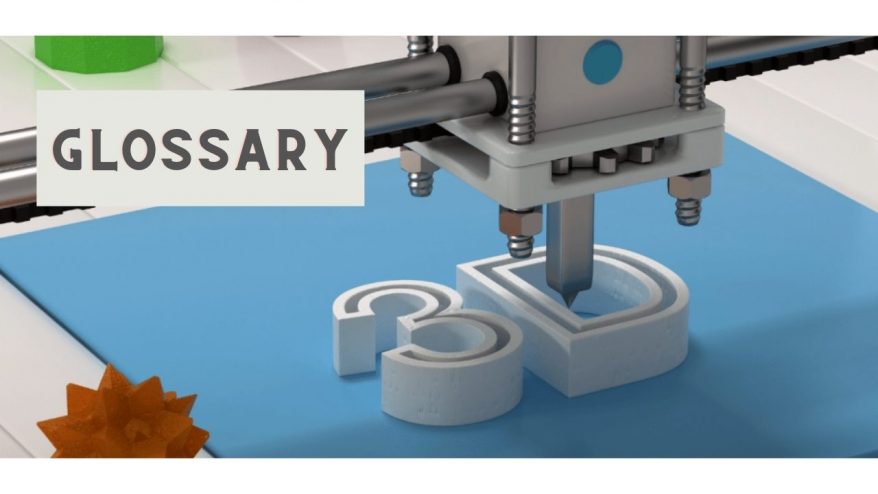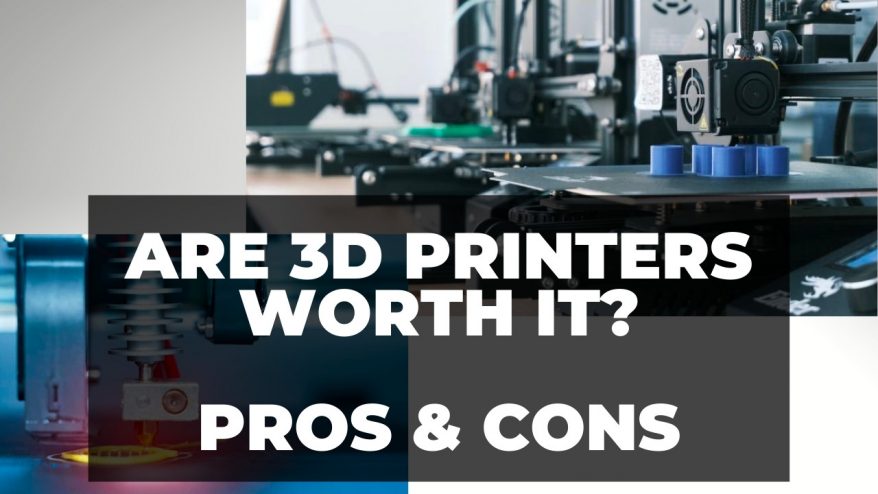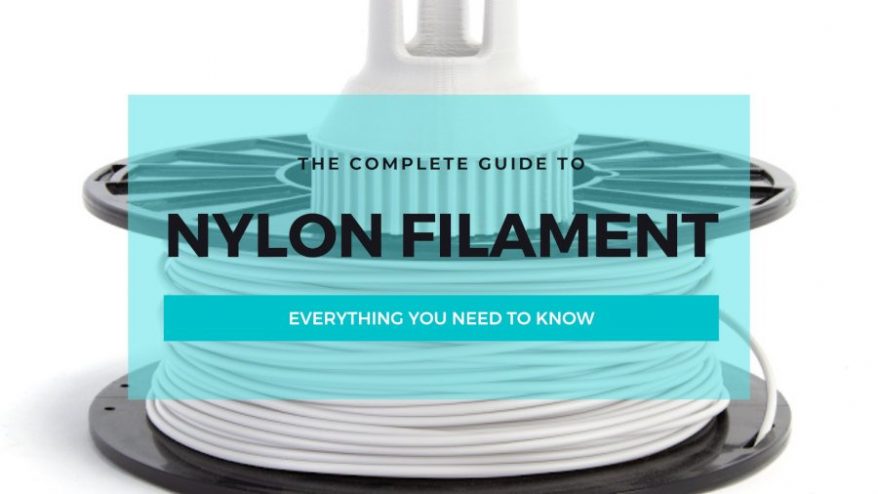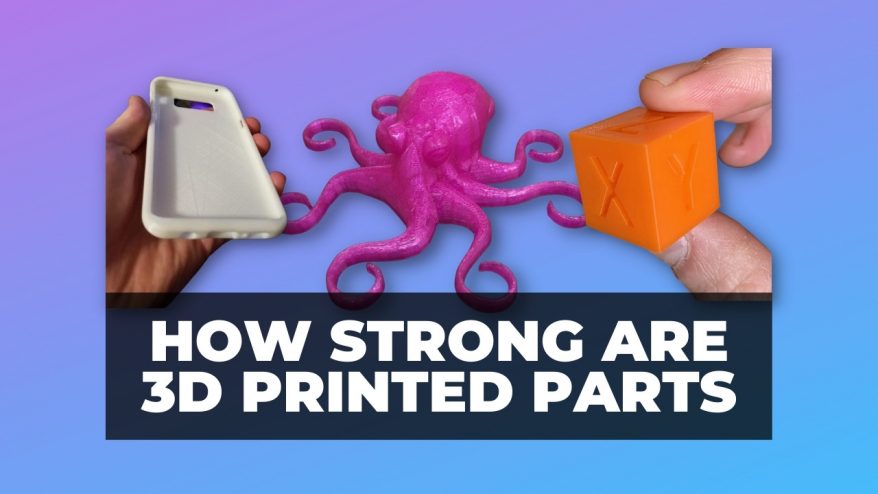
How Strong Are 3D Printed Parts? (PLA, ABS, PETG & More)


At 3DSourced we’ve covered everything 3D printing and 3D since 2017. Our team has interviewed the most innovative 3D printing experts, tested and reviewed more than 20 of the most popular 3D printers and 3D scanners to give our honest recommendations, and written more than 500 3D printing guides over the last 5 years.
Are 3D printed parts strong? This is a question often on the lips of outsiders peering through the window at the world of 3D printing. We’d love to give you a straight answer, but, as is often the case with 3D printing, the answer is a little more nuanced.
To attempt to answer the question of how strong are 3D printed parts, we’ve pieced together this guide. We’ll cover all the most popular 3D printing filaments, their strength, pros and cons, and also explain how other factors can affect PLA strength and other filament strength, including ABS, PETG, and more.
How Strong Are Parts 3D Printed In:
Factors Affecting The Strength Of 3D Printed Parts:
ABS
Acrylonitrile Butadiene Styrene is a popular thermoplastic polymer used for 3D printing projects that consists of styrene, acrylonitrile, and polybutadiene in varying proportions.
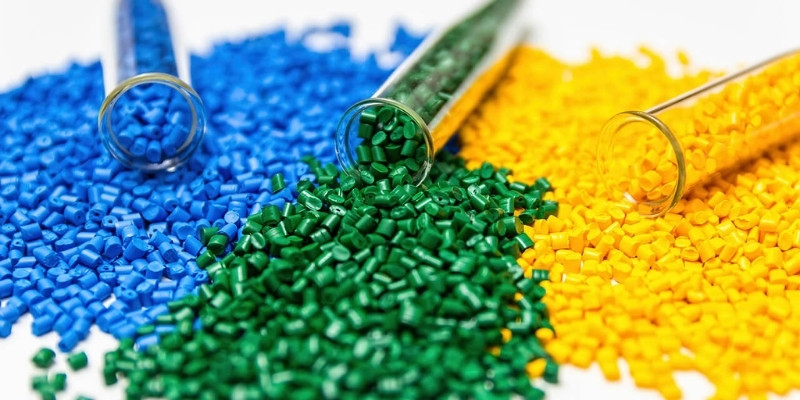
How strong are 3D printed parts made from ABS?
ABS has a tensile strength of anywhere from 30 to 100 MPa depending on the formula and additives used during manufacturing. Most consumer-grade ABS’ tensile strength falls around 30 MPa, if not a little lower.
ABS is known for its range of mechanical properties. It’s impact resistant, rigid, and heat resistant. Furthermore, it’s prized in 3D printing circles for being a low-cost material.
ABS 3D print strength falls behind PLA but makes up for this with better elasticity, allowing it to have a higher elongation at break and be far more resistant to flexing.
Typical applications include household goods, consumer goods, toys, automotive parts, piping, electronic assemblies and casing, and other 3D printing projects destined for use outdoors.
PLA
Polylactic Acid is a thermoplastic polymer and bioplastic made from the polymerization of lactic acid and lactide obtained from fermented plant starch, commonly sugarcane, beet pulp, cassava, and corn.
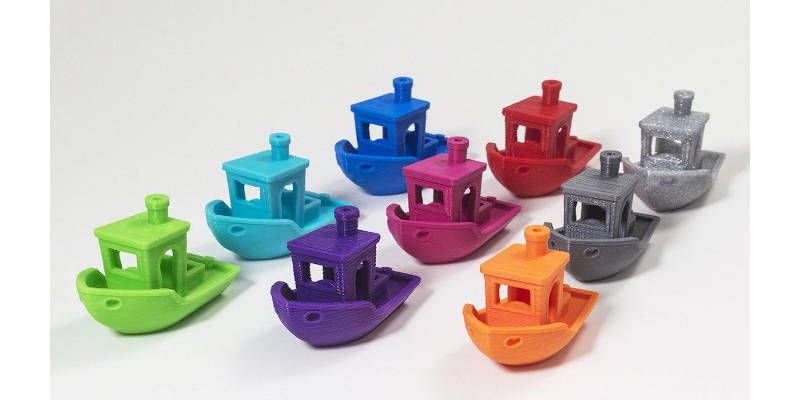
How strong is PLA filament?
PLA has a tensile strength of around 40 MPa, though this can vary depending on additives and the manufacturing process.
For 3D printing purposes, PLA is favored chiefly because it is cheap, generally odorless, and biodegradable. It is also easy to use thanks to its relatively low melting point, low warp and shrink properties, and broad tolerances for external factors, unlike ABS, which requires a stable thermal environment.
Though stronger than ABS, PLA strength comes with some caveats. It is more brittle and less impact resistant, lowering its 3D printing durability. It’s also much less flexible, with elongation at break rarely exceeding 10%.
Additionally, the lower resistance to heat – glass transition temperature of around 60°C – means the strength of 3D printed parts lose its advantage at higher temperatures.
Common applications include miniatures, 3D printed parts, decorative pieces, memorabilia, cosplay props, rapid prototyping, and other low-use, aesthetically-geared projects.
PETG
Polyethylene Terephthalate Glycol-Modified is the 3D printed version of the widely used PET thermoplastic polyester made from the polymerization of ethylene terephthalate modified for extra durability.
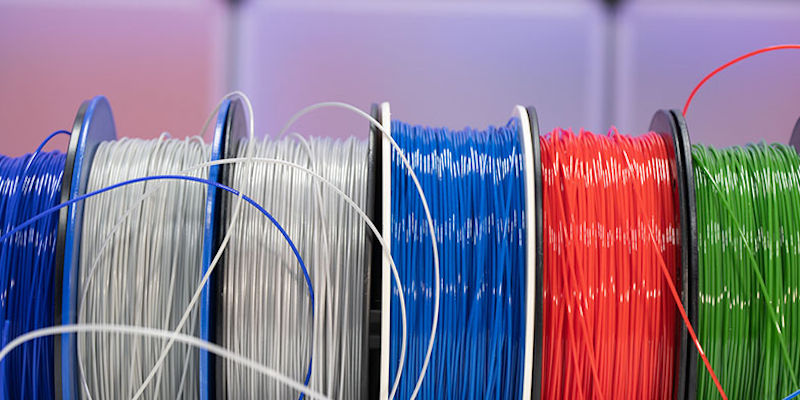
How strong is PETG filament?
3D printing PETG has a tensile strength between 30 and 50 MPa.
While strong, PETG stands out as one of the most durable 3D printing materials available. In addition, it’s also more flexible than PLA and ABS, has a softer and smoother finish, and has an elongation at break sitting anywhere north of 25%, depending on the formula.
It’s also much easier to print than ABS due to its formability. Alongside, it boasts excellent chemical, heat, and water resistance.
Due to its properties, PETG is favored for applications such as food containers, prototyping, electronic insulation, medical solutions like aligners and implants, drone projects, mechanical parts, snap-to-fit parts, jewelry, and applications that require a decent level of impact resistance.
TPU
Thermoplastic polyurethane is a thermoplastic elastomer often used for 3D printing parts that require flexible properties.
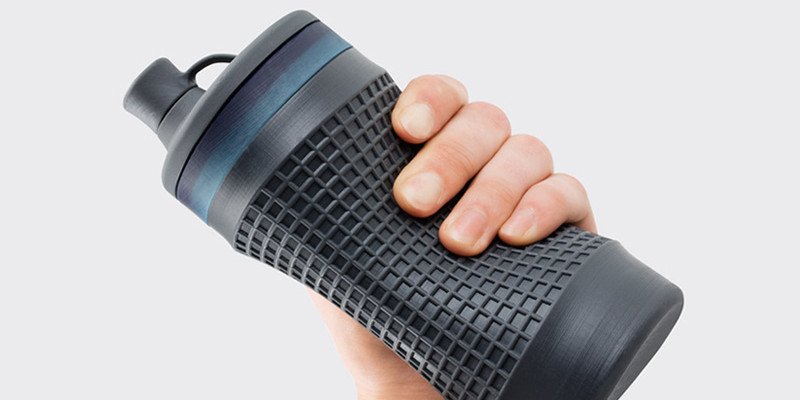
How strong is TPU filament?
It’s possible to find TPU with a tensile strength up to 150 MPa, but most consumer-grade TPU gravitates around 30 MPa.
While this positions it lower than PLA and ABS’ strength in most cases, TPU flexibility grants it excellent mechanical properties that resemble rubber. It has an elongation on break up to 600%, impact resistance, wear and tear resistance, and shock resistance. All this gives TPU better durability and longevity than most consumer-grade 3D printing filaments.
Typical applications include protective casing, phone cases, sports equipment, prosthetics, prototyping, industrial parts, protective gear, tires for RC cars, seals, shock absorbers, hinges, gaskets, non-slip surfaces, and any other project that requires material similar to rubber.
Nylon
Nylon is a 3D printing thermoplastic that’s made very much in the same way as the standard synthetic Nylon formed from polyamides we find in everyday items like textiles, electronic insulation, and gears.
How strong is Nylon filament?
Most readily-available 3D printing Nylon has a tensile strength of around 50 to 70 MPa, which makes it tougher than most PLA and ABS.
Aside from its toughness, Nylon shines for its ability to absorb shocks and impacts while also being resistant to wear and tear along with scratches, blemishes, and general abrasions even under heavy use. Additionally, Nylon has a degree of flexibility, primarily when used for thin parts, to accompany its durability.
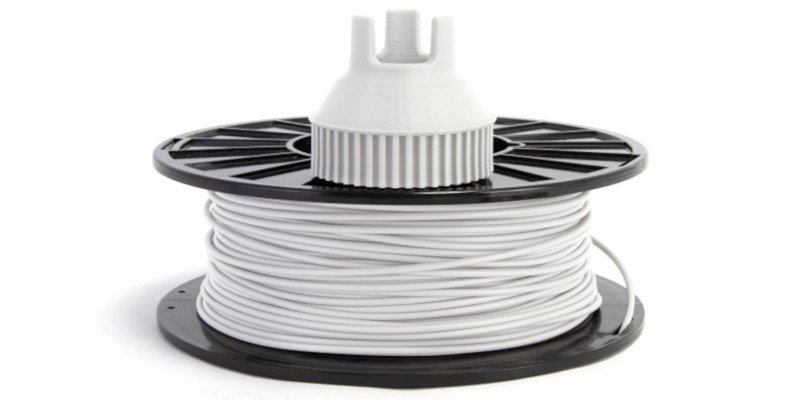
Nylon’s smooth finish also makes it a versatile option for applications that need to balance moving parts with durability. The downside? Nylon is highly hygroscopic, readily absorbing ambient moisture, and susceptible to warping during printing.
Applications include automotive manufacturing, prototyping, aerospace, living hinges, gears, industrial end-use parts, skateboard wheels, functional moving parts, medical solutions, and other projects that require a tough, reliable material.
Factors That Affect 3D Print Part Strength
Aside from the properties of the filament itself, other factors – mainly determined during the printing process – also significantly affect the strength of 3D printing parts. Tuning these correctly can greatly enhance 3D printing strength. Here we explain how to strengthen 3D prints.
Layer Height
Contrary to what you might expect, thicker layers don’t generally translate to stronger parts. But, in the same vein, thinner layers don’t aid strength either.
Thicker layers may cover a large surface area, but there are fewer bonding points throughout the print, which makes the print less able to withstand shocks and impact. For thin layers, any printing issues related to layering tend to be amplified, compounding as the printer adds more layers. Additionally, the bonds tend to be smaller and, therefore, less robust.
Strength and layer height is, therefore, a balancing act determined by the nozzle diameter and the aims of your project.
Read more: how layer height affects 3D printing
Infill Pattern and Percentage
There’s no shortage of wacky and experimental infill patterns in your favorite slicer. While these can help reduce filament use, they generally don’t have much of an impact on strength due to the natural properties of the geometry used, infills like triangular, rectangular, and hexagonal infill patterns have a slight advantage.
Where the magic happens, it’s infill percentage or density. This refers to how much of the innards or the inside of a part are filled with filament. A great way to view infills is internal support structures that hold a piece together and prevent it from caving inwards.
As a general rule, higher densities deliver better overall strength because more material will help prevent external forces from breaking, shattering, or otherwise damaging the part.
However, there is a point of diminishing returns where the extra infill density doesn’t improve overall strength but substantially increases print times and the amount of filament used to complete a print. We recommend pushing above 30%, but no higher than 50-55%.
Temperature
Printing temperature, or more specifically hot end temperature, directly impacts the strength of parts. Too hot or too cold and the filament won’t extrude and bond as intended, affecting structural integrity and exacerbating printing issues such as ghosting, poor layer adhesion, ringing, blobs, oozing, and more.
To mitigate these issues, it’s vital to set the temperature in accordance with the optimal settings for the filament you’re printing with based on manufacturer recommendations.
- PLA: 190°C to 230°C
- ABS: 220°C to 250°C
- PETG: 220°C to 230°C
- TPU: 210°C to 230°C
- Nylon: 240°C to 260°C
Wall Thickness
Perimeter or wall thickness impacts strength. The logic is sound – the larger the walls, the better the bonds between outer layers and the more weight the print can sustain without breaking.
If your part lacks strength, bump up the wall thickness to 0.8 mm, 1.2 mm, and then 1.6 mm (or multiples of your nozzle’s diameter) to notice a substantial increase.
If you plan on post-processing the print, mainly sanding, add some extra thickness to compensate for the material removed during the process.
Part Orientation
The positioning of the printed part as it’s brought to life layer-by-layer on the print bed has an impact on strength.
For the best results, orient the part so that the larger, flat surfaces, or planes, run parallel to the bed and that the areas subject to the least pressure and stress are positioned vertically.
FAQs
Are 3D Printed Items Strong?
3D printed items can be strong when made from a material that matches the use case. Certain materials are designed with strength, rigidity, durability, finish quality, and so on in mind, so it’s essential to choose a tough material like Nylon, PETG, or TPU if you want a strong printed item that can sustain impact, heat, wear and tear, water, and abrasions and other stresses.
Are 3D Printed Parts Weaker?
D printed parts are generally weaker than identical parts made using more traditional manufacturing processes due to the natural structural weakness of the additive bonding of layers. That said, this all depends on the material used. Filaments such as TPU, Nylon, and composite fill materials offer excellent durability and strength compared to more standard filaments like PLA and ABS.
Do 3D Printed Things Break Easily?
It depends on the material used. PLA, the most widely used 3D printing filament, is extremely brittle and can easily shatter, snap, and break. Filaments like ABS, PETG, TPU, and Nylon tend to have better resistance properties, namely to shock, impact, and other stresses, which makes them far less likely to break when used to create 3D printed parts, items, and models.
Are 3D Printed Metal Parts Strong?
3D printed metal parts are strong, approaching the properties of conventional steel production techniques for overall durability and toughness. These are suitable for various applications and fields, including aerospace, medical solutions, aviation, and engineering, especially for projects subject to stresses and extremes.
Related articles:







